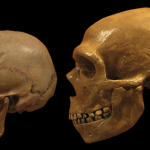Using as little as 1 picogram of purified DNA sample (think 2.5 trillion times lighter than a penny), scientists at the University of Brisbane have developed a method that permits the swift detection of cancer DNA in a patient sample of cell-free DNA, which circulates systemically. These researchers took advantage of the finding that cancers have drastically different patterns of methylation on their genomic sequences than normal cells. These endow the DNA with unique physical properties, including the way in which it can bind to gold nanoparticles. Using this system, a color-change of a mixture comprised of DNA, gold nanoparticles, and a salt solution is the readout for presence or absence of methylation patterns that are indicative of cancerous DNA.
















